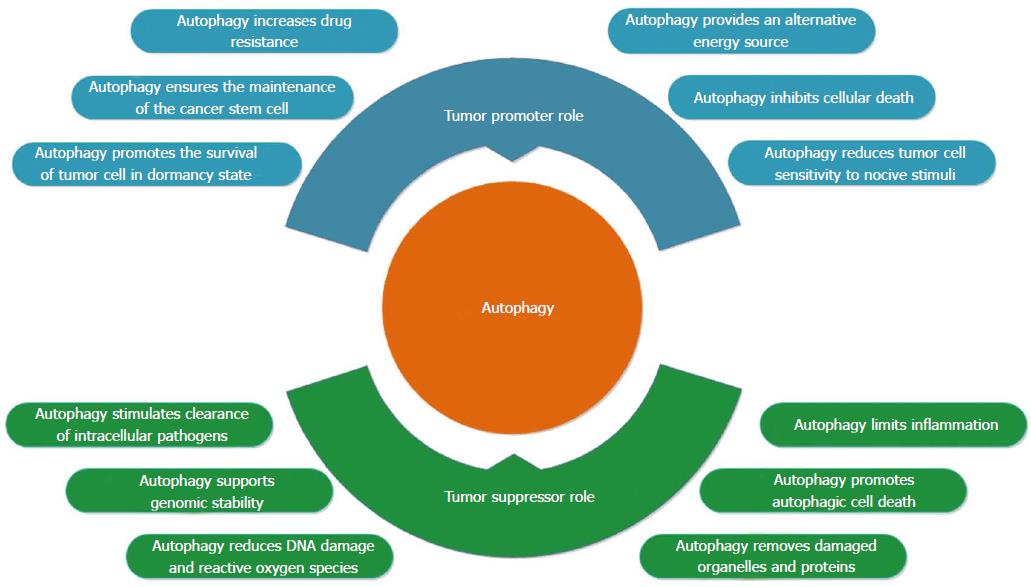Copyright
©The Author(s) 2015.
World J Gastrointest Oncol. Nov 15, 2015; 7(11): 271-284
Published online Nov 15, 2015. doi: 10.4251/wjgo.v7.i11.271
Published online Nov 15, 2015. doi: 10.4251/wjgo.v7.i11.271
Figure 1 Morphological steps of the autophagy process.
Autophagy is initiated with the formation of a phagophore, which sequesters cellular material in a double-membrane vesicle called an autophagosome. The autophagosome fuses with lysosomes to form an autolysosome.
Figure 2 The dual and contradictory roles of autophagy in cancer.
Autophagy can potentially act as either a promoter or an inhibitor during the transformation from normal cell to malignant cell. Autophagy supports tumor formation by providing an alternative energy source, increasing drug resistance, inhibiting cell death, promoting the survival of tumor cells in a dormant state and ensuring the maintenance of cancer stem cell compartments. Autophagy protects normal cells from malignant transformation by removing damaged organelles and proteins, reducing DNA damage and reactive oxygen species, supporting genomic stability, promoting autophagic cell death, limiting inflammation and stimulating the clearance of intracellular pathogens.
- Citation: Burada F, Nicoli ER, Ciurea ME, Uscatu DC, Ioana M, Gheonea DI. Autophagy in colorectal cancer: An important switch from physiology to pathology. World J Gastrointest Oncol 2015; 7(11): 271-284
- URL: https://www.wjgnet.com/1948-5204/full/v7/i11/271.htm
- DOI: https://dx.doi.org/10.4251/wjgo.v7.i11.271














